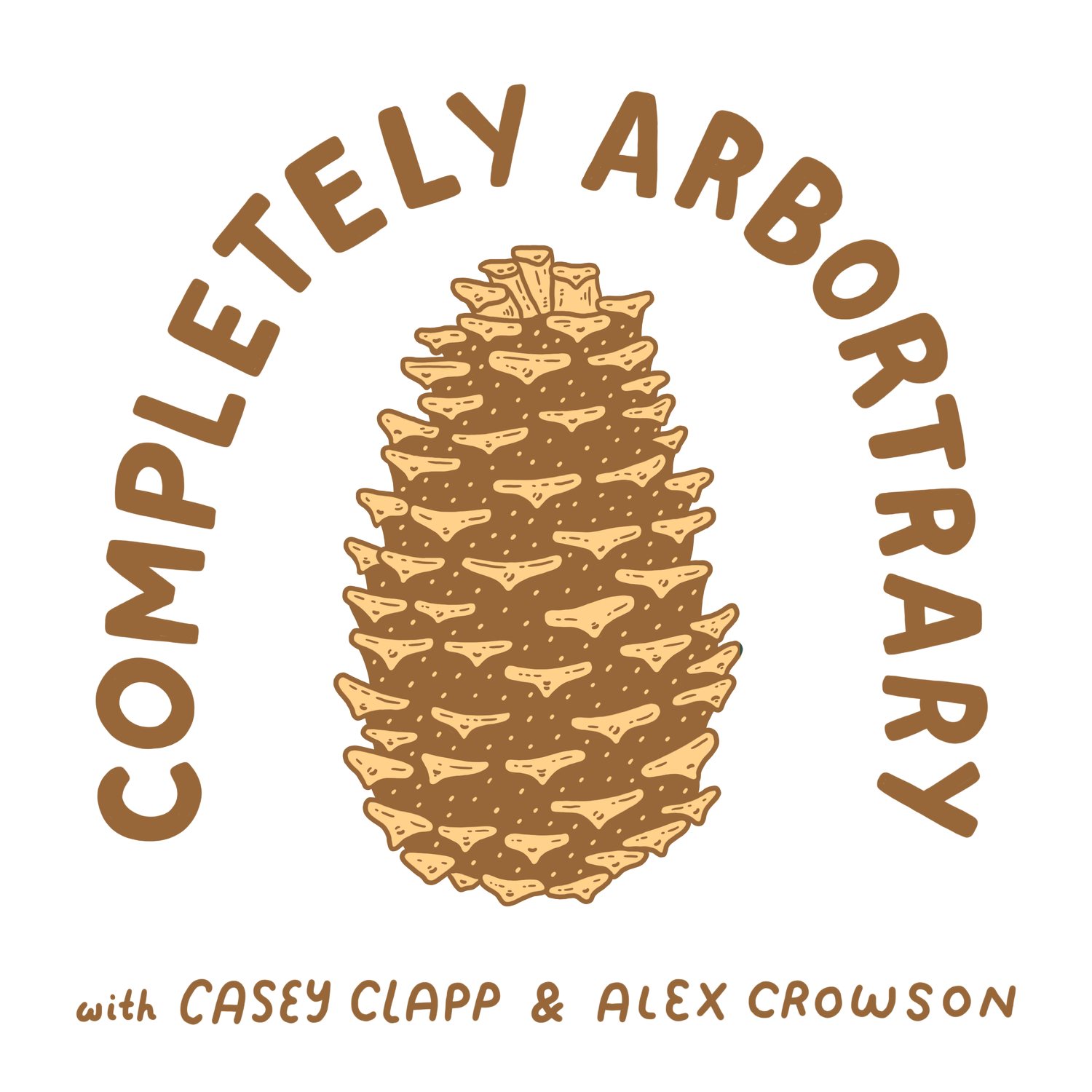THE TREE BEFORE TIME (GINKGO)
What smells like barf, lived with dinosaurs, and makes for a great tattoo? This tree! Ginkgo (Ginkgo biloba) is a living fossil; a tree so old it lived among prehistoric monsters, and so long-lived that it lives among modern humans. A true survivor, this tree spent thousands of millenia hermitting in its little corner of China. But today we've all got Ginkgo fever, and this ancient species is now planted worldwide and beloved by many. It's a vomit-scented episode that'll really stick with you.
Ginkgo
(Ginkgo biloba)
Some trees scarcely need an introduction. Their reputations precede them, and they often have attained such status in the collective mind that they become practically mythical. It goes without saying that the ginkgo (Ginkgo biloba) has reached such lofty heights.
It’s no surprise that the ginkgo has become a cultural symbol. Its history with people goes back thousands of years, having been propagated and used for food and medicine in its native China. Its unique fan-shaped leaves, curious form, and stunning yellow color in autumn ensured that aside from it cultural uses, it would also occupy a high pedestal in the horticultural trade. Don’t even get me started on their value for tattoo artists and graphic designers! The ginkgo truly is a force to be reckoned with; it’s one of the most recognizable botanical symbols, ranking among the maple leaf and the acorn.
Though I think it’s important to note that the ginkgo really is a dime a dozen contemporary tree, I’d be remiss to not give it credit where it’s due: botanically.
With a lineage that extends back nearly 290 million years, the ginkgo is the last of a long dynasty of trees that made up a significant proportion of ancient forests. In fact, the species that we have growing in parks and along streets today has changed little from its ancestors 170 million years ago. It’s quite literally a tree from a different time.
The curiosities don’t end there. The ginkgo is so old and unique it has its very own division in the plant kingdom, and it is the only living member of that division. A division (or phylum) is a high level of plant hierarchy, denoting one of the broadest categories for ordering life on earth. The fact that ginkgo alone occupies this division means that there is no other living plant that is closely related to it. For reference, all of the conifers—every one of them, all of their species, genera, families, and orders—are included in just one division. They are all more closely related to each other than the ginkgo is to anything else alive on the planet today.
In fact, of all the plants alive on earth today, the broadleaf and distinctly not conifer-looking ginkgo is more closely related to these conifers than any other broadleaf tree: the ginkgo does not have flowers.
Botanically speaking, ginkgos are gymnosperms. This means that they do not hide away their eggs in ovaries and require pollen to burrow through the flowering structures to fertilize them. This is the standard approach of the angiosperms, the flowering plants like magnolias and oaks, roses and rosemary, and all many of the so-called broadleaf plants. The ginkgo sets its ovules out in the open to allow for pollination directly, and it evolved this strategy before angiosperms were even a twinkle in Mother Nature’s eye.
The ginkgo really does stand up to the hype. Yes, society’s obsession with it can be a little much. But, as you uncover the truth behind this tree, its charm compounds.
But wait… it leaves its best surprise for last.
Completely Arbortrary is produced and hosted by Casey Clapp and Alex Crowson
Support the pod and become a Treemium Member
Follow along on Instagram
Find Arbortrary merch on our store
Cover art by Jillian Barthold
Music by Aves and The Mini-Vandals
Episode cover photo by Losada Rodríguez
Additional Reading:
The Ginkgo (Ginkgo biloba)
More specifics on the ginkgo
The famous ginkgo sex trick
Botanical Sexism

